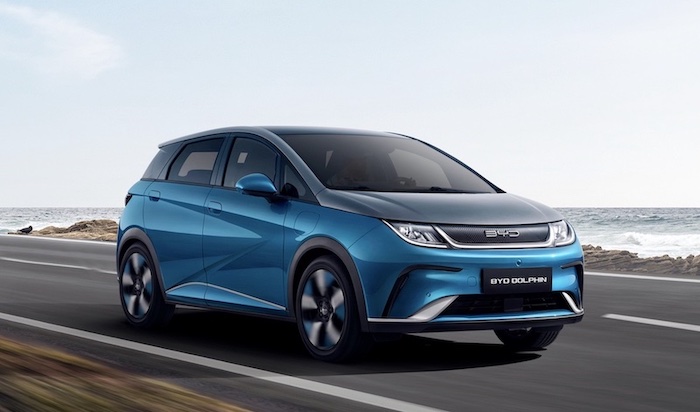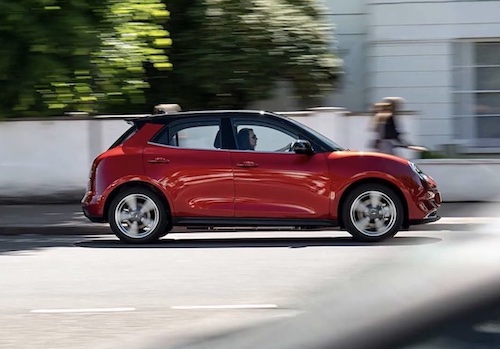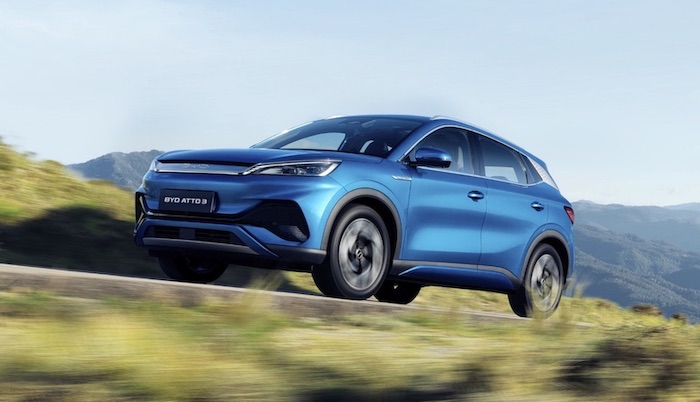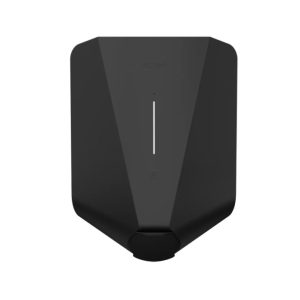Overview
Though, BYD Auto Co., Ltd is not an automotive brand we may easily recognise in the UK, the BYD pure electric buses have been prevalent in our market, since 2013. BYD, an acronym for “Build Your Dreams’, is a publicly listed Chinese multinational company that manufacturers passenger cars, buses, trucks, forklifts, electric bikes and automotive components, to include, EV batteries.
In relation to electric vehicles (EVs), BYD is the fourth largest EV manufacturer in the world, to include, BEVs (battery-electric vehicles) and PHEVs (plug-in hybrid electric vehicles). It is also the third largest manufacturer of EV batteries in the world.
In fact, the company has more than 28 years experience in battery research & development. The multinational conglomerate is headquartered in Xi’an (Shaanxi Province, China). The company also envisions opening BYD ‘Pioneer’ stores in the UK. BYD currently has the following EVs in its portfolio:
- BYD Atto 3
- BYD Dolphin
- BYD SEAL
- BYD Han
- BYD Tang
Electric Cars: The Basics
For those of you new to zero-emission electric driving, we recommend a read of the following articles:
Sign up to the e-zoomed Electric Living newsletter
The All-Electric BYD Dolphin Hatchback
There is a proverb ‘Good things come in threes’, and this could hold true for the recent entry of BYD electric cars in the UK. First was the all-electric BYD ATTO 3, followed by the all-electric BYD Dolphin. Also coming later in 2023, is the all-electric BYD Seal.
However, this should not come as a surprise, as Chinese automotive manufacturer leverage their vast experience in the development and production of electric vehicles (EVs), to gain a foothold in key international markets, like the UK.
Expect many more battery-electric vehicles (BEVs) from China based automotive companies to be launched in the coming months and years. In our view, this is a positive trend for the long-term development of the EV sector. Nothing like more competition to lower retail prices!
The Dolphin is not a new electric car. It has been manufactured since 2021 for the Chinese market. It is also the first production model to feature the new BYD logo. As you can expect, the ATTO 3 SUV and the Dolphin (C-segment hatchback) have much in common. Both electric cars are underpinned by the same EV dedicated platform, the BYD e-Platform 3.0. It is the first hatchback to use this ‘ultra-intelligent’, next-generation EV platform.
BYD claims that the platform enables an electric range exceeding 1,000 km (620 miles) via the world’s first 8-in-1 electric powertrain. The platform also uses blade batteries, which it claims is ‘one of the world’s safest batteries’. According to the company, the Blade Battery has surpassed the Nail Penetration Test.
According to BYD, the Dolphin electric, incorporates “Ocean Aesthetics, a design concept providing a dynamic, stylish, and highly recognisable visual symbol. In the car’s design, the dolphin, a marine mammal, is presented in both figurative and imaginative forms”.
It does take some stretch of the imagination to visualise the mammal in the e-hatchback, but we nevertheless like the exterior styling and the name! The crease lines certainly enhance the appeal. The EV is also available in dual-tone colour schemes.
Despite the limited BYD brand awareness in the UK (except, if you have spotted the brand on your local public e-bus), the electric hatchback has much to offer families seeking an affordable, yet practical family all-electric hatchback.
BYD has yet to confirm prices for the UK, but we expect it to be priced between £25,000 and £30,000. Quite similar to the all-electric Corsa-e and the all-electric GWM Ora Funky (another Chinese brand), and the all-electric MG4 hatchback (yes, another Chinese brand!). Deliveries of the Dolphin are expected to commence in Q4 2023. The Dolphin electric is the same length as the Ora Funky Cat and the MG4 (4.2 metres), but longer than the Corsa-e (4.0 metres).
The Dolphin electric hatchback has a 60 kWh onboard Blade EV battery, with a claimed WLTP zero-emission electric range up to 265 miles. The cobalt-free EV battery uses Lithium Iron-Phosphate (LFP). The EV also incorporates Cell-to-Pack (CTP) technology. Most EVs currently available in the market use the more conventional lithium-ion batteries. BYD will introduce a 45 kWh EV battery option in 2024.
A 60 kWh EV battery is a good size for a compact hatchback, like the Dolphin. However, expect a real-world e-range closer to 225 miles, which is more than ample for most day-to-day needs and motorway driving. It is worth noting that the EV incorporates a high-efficiency heat pump as standard. For those new to electric driving, a heat pump is an ‘efficiency enhancing’ innovation i.e. helps with better electric range performance.
The BYD Dolphin offers even slower DC charging capability (88 kW DC), compared to the BYD Atto 3 (150 kW DC). We suspect that the automotive manufacturer has offered only up to 88 kW DC, as many family electric cars are charged mostly at home (80% of the time). At 88 kW DC, the Dolphin EV can be charged 30% – 80% in 29 minutes. For some reason BYD does not give the more standard 10%-80% DC charging time!
Though the EV incorporates a 11 kW (three-phase) AC onboard charger as standard, given that most homes in the UK are powered by single-phase power supply, the EV charging will be limited to 7 kW AC (single-phase) charging. At 7 kW, the EV battery will take up to 9 hours and 42 minutes. Three-phase EV charging will be faster.
We recommend a ‘topping up’ approach to charging an electric car. This way, charging times are shorter! We also recommend combining an on-site PV system and battery storage, to truly leverage the benefits of zero-tailpipe emission electric driving. The EV incorporates vehicle-to-load (V2L). Using the onboard bidirectional charger, V2L can be used to charge certain electric appliances, like a laptop, smartphone etc. The EV can achieve a 3.3 kW external discharge. You can buy V2L EV cables via e-zoomed!
The front-wheel drive (FWD) BYD Dolphin can deliver 0-62 mph in 7.0 seconds (maximum power: 204 PS (150 kW)/ Torque: 310 Nm). The top speed of the EV is 99 mph. The EV has two levels of regenerative braking: Standard and High. For those new to electric driving, getting used to regen braking is not a significant challenge!
In terms of safety, the compact EV has a host of safety features, to include: forward collision warning, autonomous emergency braking, rear collision warning, rear cross traffic alert and rear cross traffic brake, lane departure prevention and emergency lane keeping assist. These come as standard for all variants. The EV has yet to achieve a Euro NCAP rating.
The interior of the five-door BYD Dolphin is not as minimalistic as the all-electric Honda-e. Nevertheless, the interior styling of the Dolphin works well. The EV has a 345 L boot. The seats can be split 60:40 allowing it to be expanded to 1,310 litres. In contrast the Honda-e has a 171 L boot.
BYD has followed a similar philosophy to the all-electric Fisker Ocean EV by adopting to use vegan leather seats. A few automotive manufacturers have already embraced this rapidly increasing trend. Despite the compact size of the electric hatchback, the Dolphin feels surprisingly spacious. The full-sized panoramic sunroof enhances the sense of the interior space. The sunroof is not available on all variants.
Company-car drivers can take advantage of the lower Benefit-in-Kind (BiK-2%) tax rate, given the zero-tailpipe emissions. Bottom-line, electric driving is good for the environment and the wallet. You can lease electric vehicles at very competitive prices via e-zoomed!
| PROS | CONS |
|---|---|
| An affordable electric hatchback with a practical e-range | DC charging limited to 88 kW DC |
| Incorporates heat-pump, V2L and good level of standard equipment | Entry-level smaller EV battery option not available immediately |
| Developed on a dedicated EV platform and incorporates Blade Battery technology | Limited brand awareness |
The All-Electric BYD Dolphin Hatchback (credit: BYD)
| At A Glance | |
|---|---|
| EV Type: | Battery-Electric Vehicle (BEV) |
| Body Type: | Hatchback |
| Plug-In Car Grant (PiCG): | Not Available |
| Engine: | Electric |
| Available In UK: | Yes |
| Variants (2 Options) |
|---|
| BYD Comfort (from £30,195) |
| BYD Design (from £ 31,695) |
| EV Battery & Emissions | |
|---|---|
| EV Battery Type: | Lithium Iron-Phosphate (LFP) |
| EV Battery Capacity: | Available in one battery size: 60 kWh |
| Charging: | 88 kW DC rapid charging (30%-80%: 29 mins). Onboard charger 11 kW AC (0%-100% : 6 hrs 30 mins)/ 7 kW AC (0%-100% : 9 hrs 42 mins) |
| Charge Port: | Type 2 |
| EV Cable Type: | Type 2 |
| Tailpipe Emissions: | 0g (CO2/km) |
| EV Battery Warranty: | 8 years or 100,000 miles |
| Average Cost Of Residential Charging | |
|---|---|
| Battery net capacity : 16.7 kWh | £2.40 |
| Battery net capacity : 30.0 kWh | £4.32 |
| Battery net capacity : 39.2 kWh | £5.64 |
| Battery net capacity : 45.0 kWh | £6.48 |
| Battery net capacity : 50.0 kWh | £7.20 |
| Battery net capacity : 64.0 kWh | £9.22 |
| Battery net capacity : 71.0 kWh | £10.22 |
| Battery net capacity : 77.0 kWh | £11.09 |
| Battery net capacity : 90.0 kWh | £12.96 |
| Battery net capacity : 100.0 kWh | £14.40 |
- Note 1: The average cost of residential electricity in the UK varies depending on the region, supplier and type of energy used. An average for the UK is 14.40 p/kWh.
- Note 2: Not all EV manufactures make available the data on net EV battery capacity, and in a number of instances the EV battery capacity advertised, does not state if it is gross or net capacity. In general, usable EV battery capacity is between 85% to 95% of the gross available capacity.
| Charging Times (Overview) | |
|---|---|
| Slow charging AC (3 kW – 3.6 kW): | 6 – 12 hours (dependent on size of EV battery & SOC) |
| Fast charging AC (7 kW – 22 kW): | 3 – 8 hours (dependent on size of EV battery & SoC) |
| Rapid charging AC (43 kW): | 0-80%: 20 mins to 60 mins (dependent on size of EV battery & SoC) |
| Rapid charging DC (50 kW+): | 0-80%: 20 mins to 60 mins (dependent on size of EV battery & SoC) |
| Ultra rapid charging DC (150 kW+): | 0-80% : 20 mins to 40 mins (dependent on size of EV battery & SoC) |
| Tesla Supercharger (120 kW – 250 kW): | 0-80%: up to 25 mins (dependent on size of EV battery & SoC) |
- Note 1: SoC: state of charge
| Dimensions | |
|---|---|
| Height (mm): | 1570 |
| Width (mm): | 1770 |
| Length (mm): | 4290 |
| Wheelbase (mm): | 2700 |
| Turning Circle (m): | N/A |
| Boot Space (L): | 345 |
| BYD Dolphin | |
|---|---|
| EV Battery Capacity: | 60 kWh |
| Pure Electric Range (WLTP): | 265 miles |
| Electric Energy Consumption (kWh/100km): | 15.9 |
| Charging: | 88 kW DC rapid charging (30%-80%: 29 mins). Onboard charger 11 kW AC (0%-100% : 6 hrs 30 mins)/ 7 kW AC (0%-100% : 9 hrs 42 mins) |
| Top Speed: | 99 mph |
| 0-62 mph: | 7.0 seconds |
| Drive: | Front-wheel drive (FWD) |
| Max Power (PS): | 204 (150 kW) |
| Torque (Nm): | 310 |
| Transmission: | Automatic |
| Seats: | 5 |
| Doors: | 5 |
| Kerb Weight (kg): | 1,405 |
| Colours: | 7 |
| NCAP Safety Rating: | N/A |
While e-zoomed uses reasonable efforts to provide accurate and up-to-date information, some of the information provided is gathered from third parties and has not been independently verified by e-zoomed. While the information from the third party sources is believed to be reliable, no warranty, express or implied, is made by e-zoomed regarding the accuracy, adequacy, completeness, legality, reliability or usefulness of any information. This disclaimer applies to both isolated and aggregate uses of this information.








































